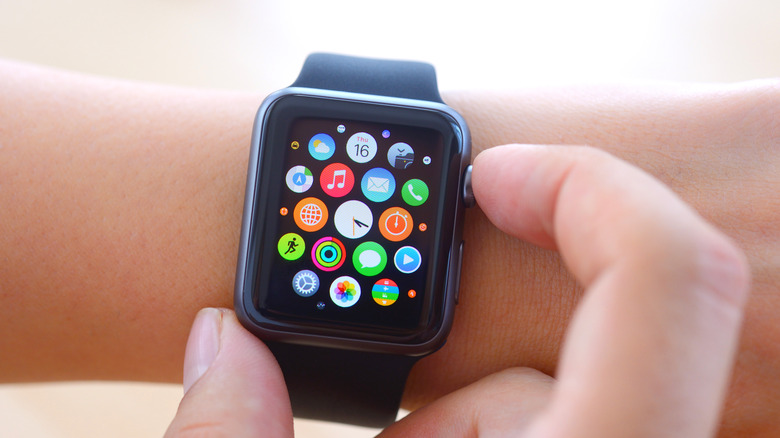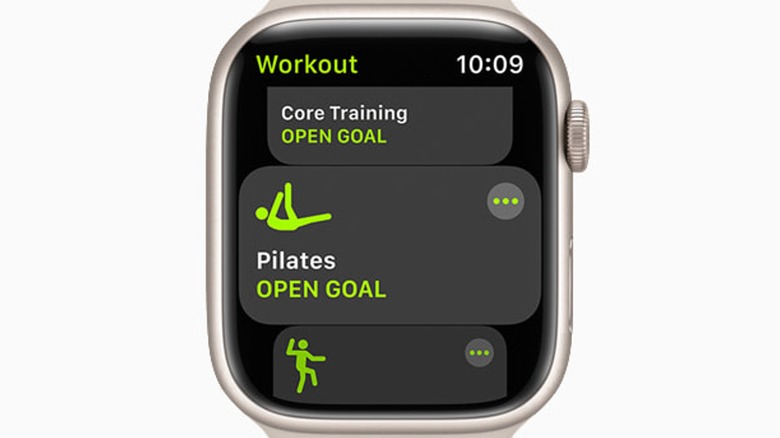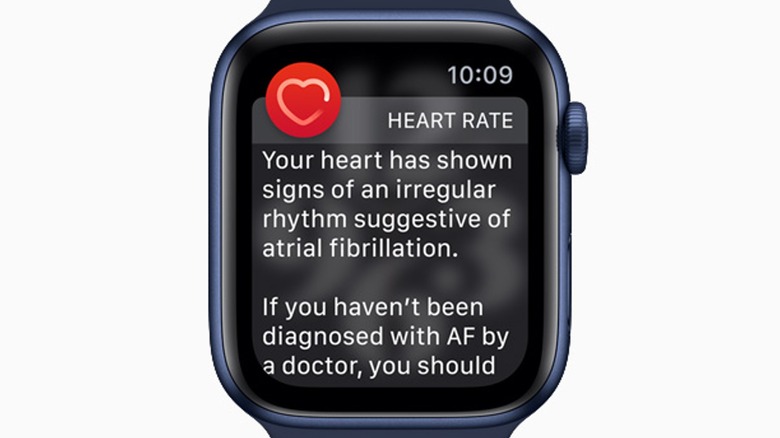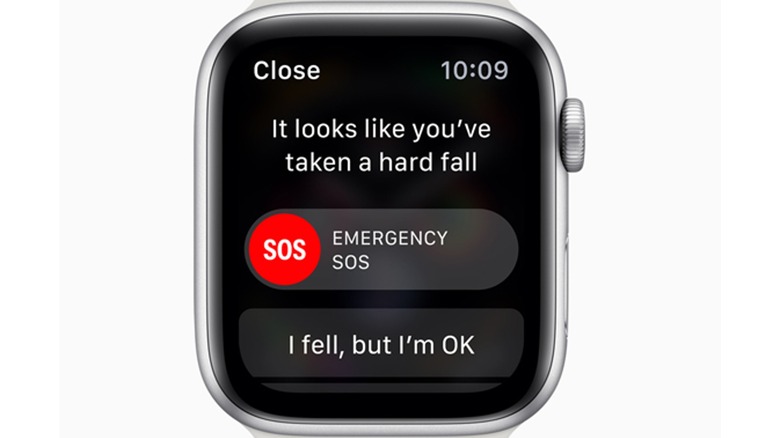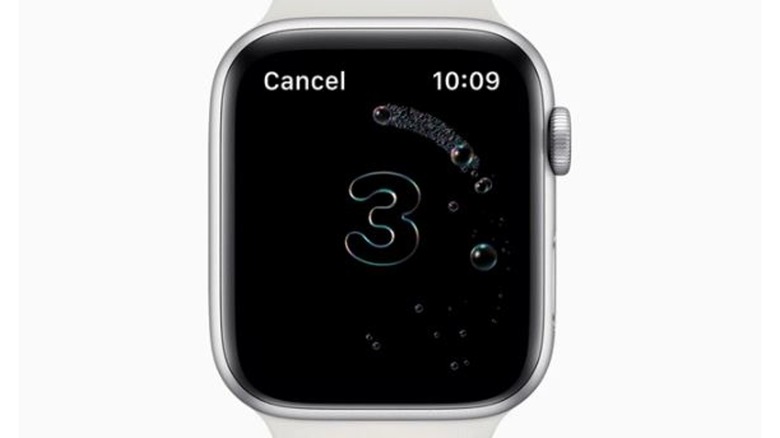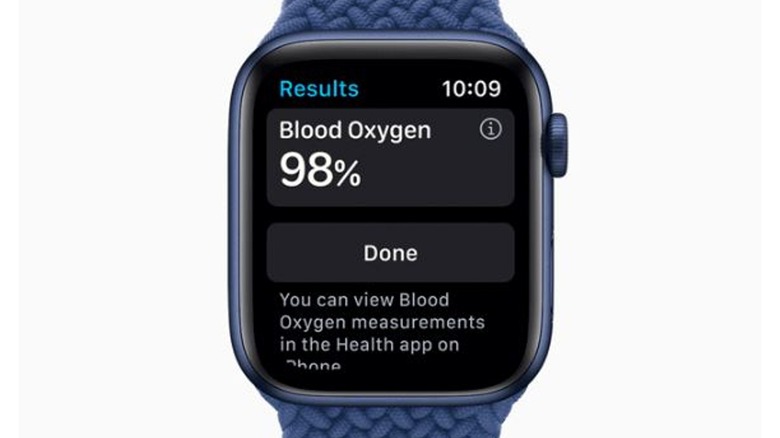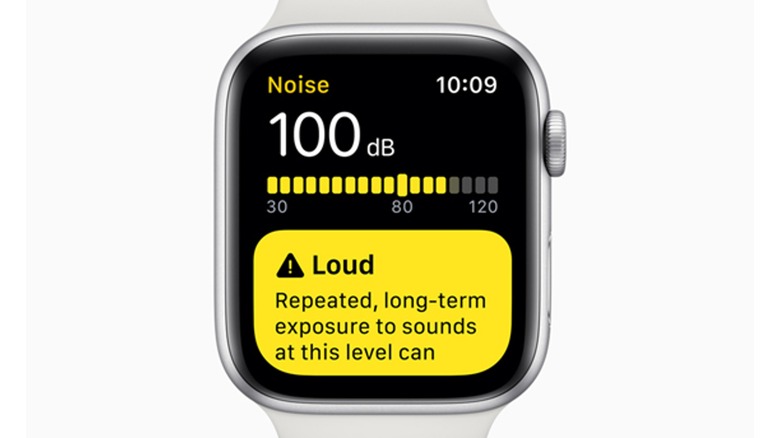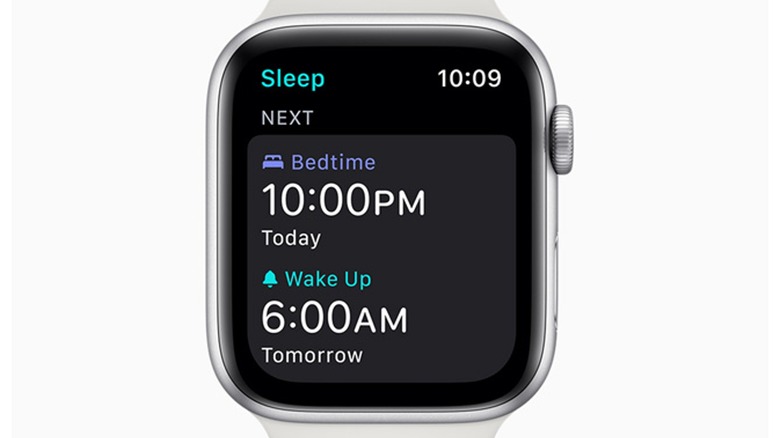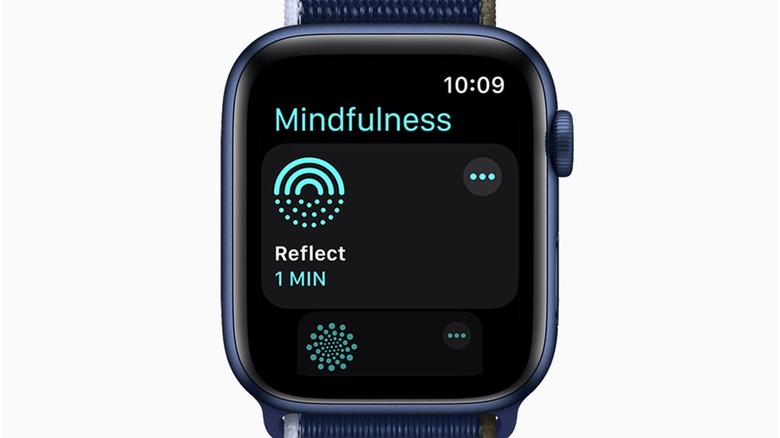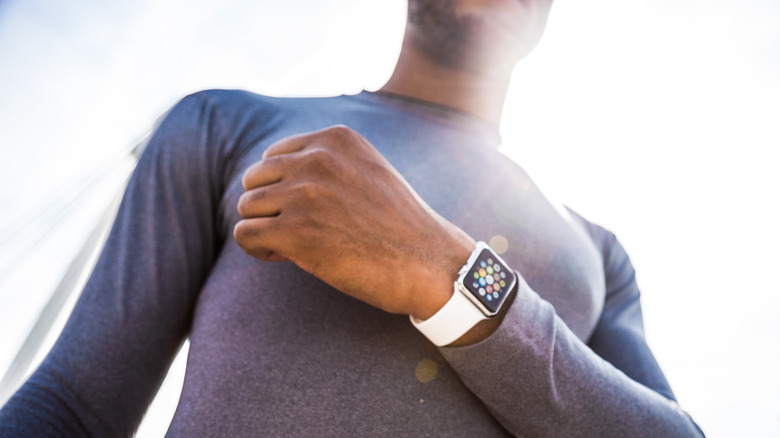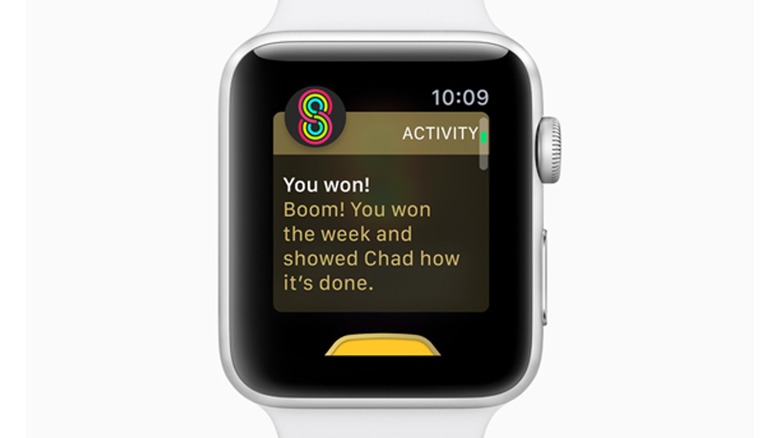10 Apple Watch Features That Will Help You Stay In Shape
Wearables haven't quite taken off the way we might have hoped but one device has managed to gain a foothold... or, perhaps more accurately, a handhold. But the Apple Watch has managed to succeed where other wearables, even other smart watches, haven't. Part of its success is its existing and familiar infrastructure, as well as a wide range of useful apps.
In addition to passing on your messages, phone calls and other alerts from your iPhone or iPad, the Apple Watch serves as a highly functional fitness device. By wearing the watch during active periods, it can gather information about your activities and habits, then turn that input into useful information.
You can also take advantage of various sensors, activities, and alerts to set, manage, and achieve your fitness goals. Even if you're not on a fitness journey of any kind, your Apple Watch can still help you keep the gears of your body greased and moving smoothly with these cool features.
Workout
The Workout app for the Apple Watch may be an obvious choice, but it's also easily the most useful feature for building good fitness habits. It makes tracking your workouts incredibly easy, which is really what you're looking for when you're already pushing your body to the limit.
You can start workout sessions at any time by opening the app, scrolling through options, and tapping the activity of your choice. You can also set goals for your session by tapping the ellipses at the top-right when viewing your chosen workout. While the app doesn't list every possible activity, it does have a wide range of options that include indoor and outdoor walking, running, or cycling, hiking, swimming, and even fitness gaming. That's right; you can get your active minutes in while crushing a few levels of "Beat Saber."
Once you've chosen your workout, your watch will start a three-second countdown before you begin. When you're finished, just swipe right and tap "end." Then, if you're feeling bold, you can share your workouts with friends and cheer one another on over time.
Cardiovascular alerts
Your Apple Watch is equipped with a light sensor on its underside, capable of peering beneath your skin to gather and report information. One of the most common methods for tracking your health with an Apple Watch is using its various heart monitoring functions.
When enabled, the Heart Rate app monitors your pulse periodically throughout the day, providing you with baseline information about your resting, active, and recovery rates over time. If you want more specific information, like your heart rate at the end of an intense workout, you can trigger a measurement manually by opening the app.
Additionally, you can set up alerts to go off if you drop below or rise above a specified value. If your watch is running watchOS 5.1.2 or later, it can also keep an eye out for irregular heart rhythms which could be an indicator of a serious health condition. If you're at all concerned about your heart health or you just want to see your resting rate decline as you get stronger, the Heart Rate app has you covered.
Fall Detection
In the old days, if you thought you might be at risk of falling and needing help, you had to buy a Life Alert necklace from a late-night infomercial. These days, your Apple Watch will do all of that work on your behalf.
Relatively recent Apple Watch models (Series 4 or later) are equipped with a built-in fall detection function and are capable of jumping to action if and when you need help. If your watch detects a fall, it first attempts to get your attention by vibrating against your wrist and playing an audio alarm. You'll also see a notice on the watch face asking if you are okay or if you want to contact emergency services. It also has a backup plan, in the event that you can't respond to the alert.
If you don't decline the prompt within a minute, and if your watch detects that you're not moving, it starts a 30 second countdown. During the countdown, it plays an alarm at an increasingly loud volume, then it contacts emergency services. Once connected, it plays an audio message including your current coordinates. Finally, it sends a message with your location to whomever is saved as your emergency contact. If you're planning to spend time off the grid, consider upgrading to an iPhone 14 or iPhone 14 Pro along with your Apple Watch, which will give you access to the satellite-based Emergency SOS system, even when you're out of regular signal range.
Handwashing timer
In sports, it's often said that the best offense is a good defense, and the same is true of health. One of the best ways to stay in shape is to maintain your overall health, and that in turn means maintaining the fight against microbes.
There's no easier way to safeguard your health than to wash your hands regularly and correctly. Washing your hands isn't exactly rocket science, but duration matters, and many people don't get to the requisite 20 second minimum for effective germ eradication. Fortunately, your Apple Watch can detect when you've started washing your hands and automatically trigger a 20 second timer.
You only have to activate Handwashing one time. After that, your watch will pay attention to your hand movements and initiate automatically. Setting it up is pretty easy, too. All you need to do is open the settings on your watch, scroll down to the Handwashing option, and turn it on. The next time you start washing your hands, your watch will start a timer without any additional signal from you — and if you stop too soon, it will encourage you to finish up.
You can also set up reminders to wash your hands when you return home, using location services, so you can clean up from the day before hunkering down for some well-deserved leisure time.
Blood Oxygen
You probably don't spend too much time wondering how much oxygen is in your blood, but it's an important indicator of health and there are times when it's worth knowing. If you've been sick and are at risk of respiratory illness, or have underlying conditions, keeping an eye on your blood oxygen concentration can be useful. Likewise, when you're pushing yourself to your physical limit during a workout, you want to make sure your body is still getting what it needs.
Apple notes, and it's worth noting here as well, that measurements taken with your Apple Watch aren't intended for medical use. If you're worried you might have a serious health issue, an Apple Watch is no substitute for trained medical attention. Apple Watch uses the light sensor at the bottom of the device to O2 saturation, a measurement of how well your body is transporting oxygen from the lungs to the rest of the body. Typically, you want it to be 95% or higher. If you see lower numbers than that, it's something you might want to mention the next time you're talking to a medical professional.
Blood oxygen sensing is only available on Apple Watch Series 6 or later, running the latest version of watchOS. It must also be connected to an iPhone 6s or later, also running the latest version of iOS.
Noise limits
Staying fit and healthy is about more than just diet and exercise, it's also about protecting the parts of your body that you can't beef up with weights. Case in point: your ears. Since you can't really make your ears stronger, you have to protect them from damage, but you can only become aware of that threat when it's present.
The Noise app on your Apple Watch takes care of that for you by monitoring the background noise levels in your environment and alerting you when they're potentially dangerous. When activated, your watch listens to the environment all the time — but doesn't record what it's hearing, according to Apple — in order to track your exposure to noise throughout the day.
To activate noise protection, open the Watch app on your iPhone and tap My Watch. Select Noise, then Noise Threshold, and then select the preferred decibel threshold. From there, your watch will listen to environmental sound levels and alert you if the average volume passes the limit you've chosen over the course of three minutes. You can then use that information to protect your hearing by changing your environment or using ear protection when needed.
Sleep tracking
The prevailing research is pretty clear that good sleep hygiene is critical for good physical and mental health. While your Apple Watch is great at keeping you active during the day, it can also help you rest well at night.
The Sleep app allows you to establish your preferred sleep schedule, then nudge you in the right direction until you get there. You'll get reminders when it's time to start winding down for bed, and your watch will track your sleep throughout the night. When you wake, you'll have information about how long you slept, how many times you woke up, and how long you spent in each phase of sleep throughout the night. Over time, you'll get information about how well you sleep in general, as well as tips for how you might adjust your habits to reach your sleep goals.
Apple recommends having at least 30% charge on your watch before going to bed, if you want to reliably track your sleep activity throughout the night. If you're running low, take a minute to charge before you slide beneath the covers. Rest is never wasted, especially if we put our technology to work for us. Your Apple Watch can help you prioritize sleep so you get more done during the day.
Mindfulness and meditation
Staying in shape is sometimes about lifting heavy things or traveling long distances, other times it's about staying still and paying attention to your breath. Out of the box, your Apple Watch has a number of Mindfulness features to help you stay in control of your emotional state throughout the day.
You can set up something as simple as periodic breathing exercises, during which you take a single minute to concentrate on slow, careful breathing. Or, if you want something a little more involved, you can do longer Mindfulness sessions. If you just want a few moments to yourself, tap the app to open it, select the amount of time you want between one and five minutes, and get busy finding your center.
If you've got an Apple Fitness+ subscription, you'll also get access to a vast collection of guided meditations. However you do it, the idea is to carve out a few moments throughout the day to focus on yourself and to be present inside your body. If you use them right, those few moments can inform the health and fitness decisions (not to mention every other decision) you make throughout the rest of the day.
Vision Health
Roughly four in ten people in the United States have myopia, commonly called nearsightedness. A common question around a round of drinks is how people survived before the invention of corrective lenses. The answer, it turns out, might be that fewer people were nearsighted in the past.
As instances of myopia are on the rise around the world, research has suggested a connection between time spent outside in the sunshine and risk becoming nearsighted. In the past, people spent a bit more time outside instead of indoors looking at screens. Unfortunately, the conventional wisdom that you might feel better if you spent a little time outside, appears to be true, at least in this case. With that in mind, one way of combating the risk of myopia might be to spend more time outside, particularly when you're younger.
With the release of watchOS 10, an update to the Health app will track the amount of time the wearer spends outside, potentially giving an indicator for overall vision health. Additionally, if you have children connected to you through Family Setup, you can keep an eye on their sun exposure and, hopefully, prevent a vision problem before it happens.
Challenges and competitions
One of the most effective ways to maintain healthy habits (or any habit for that matter) is to reinforce them with accountability buddies. If someone knows to expect you at the gym, they're likely to pester you if you don't show up. Your Apple Watch offers a virtual equivalent with challenges and competitions.
You can connect with your other Apple Watch-owning friends to share activities such as fitness and exercise information. You'll get alerts (and send alerts) when you and your friends complete a workout, which you can respond to with encouragement. You can also challenge one another to week-long competitions in which you earn points by closing your Move, Exercise, and Stand rings. It's a little easier to get up for that morning jog when you know Steve is going to give you a hard time at the office if you don't.
Your watch will also encourage you to take part in solo challenges, like closing your rings every day for a week or hitting a certain number of active minutes over your daily goal. Whatever sort of motivation you need, your Apple Watch can probably provide it.
